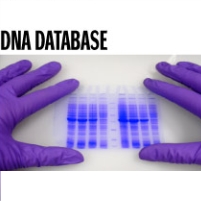FBI Has Backlog of More Than 3,200 DNA Cases
Thursday, August 12, 2010

The FBI’s forensic laboratory is having a tough time keeping up with demand for DNA analyses from its agents, as well helping local and state law enforcement deal with DNA testing. An investigation by the Department of Justice’s inspector general has revealed the lab is not meeting its goal of processing DNA cases in 60 days; some cases have languished as long as 600 days for final results.
Currently, the lab has more than 3,200 forensic DNA cases backlogged.
At one point in 2009 it had a backlog of 300,000 convicted offender samples awaiting testing. The FBI says this problem has been caused by federal legislation that greatly expanded the kind of cases that require DNA testing. It used to be that DNA samples were only collected from violent convicted federal offenders. Now DNA samples are taken from anyone who commits a federal offense, as well as non-U.S. citizens who are detained in the United States. The FBI is bogged down because of the need to analyze and upload the sample results into a growing federal DNA database. Officials insist, however, that the offender backlog will be eliminated by next month.
However, the backlog of forensic DNA cases, such as those in which samples are analyzed to identify suspects or exonerate them, is growing. The FBI says cases requiring analysis of bodily fluids have increased almost 40% in the last year, while cases needing hair, bone and teeth analysis have climbed 130%.
Compounding the FBI’s problem is its failure to develop an electronic tracking system for DNA samples. It has tried to do so for seven years now, at a cost so far of $10 million.
The FBI employs 17 DNA examiners, but plans to double this number by the end of next year.
-Noel Brinkerhoff, David Wallechinsky
FBI Has More Than 3,200 DNA Cases Backlogged (by Ed O’Keefe, Washington Post)
FBI Lab's Forensic Testing Backlog Traced To Controversial DNA Database (by Dan Froomkin, Huffington Post)
Review of the Federal Bureau of Investigation Laboratory’s Forensic DNA Case Backlog (Department of Justice, Office of the Inspector General) (pdf)
FBI Laboratory Services (FBI)
- Top Stories
- Unusual News
- Where is the Money Going?
- Controversies
- U.S. and the World
- Appointments and Resignations
- Latest News
- What If China Invaded the United States?
- Donald Trump Has a Mental Health Problem and It Has a Name
- Trump Goes on Renaming Frenzy
- Trump Deports JD Vance and His Wife
- Trump Offers to Return Alaska to Russia






Comments